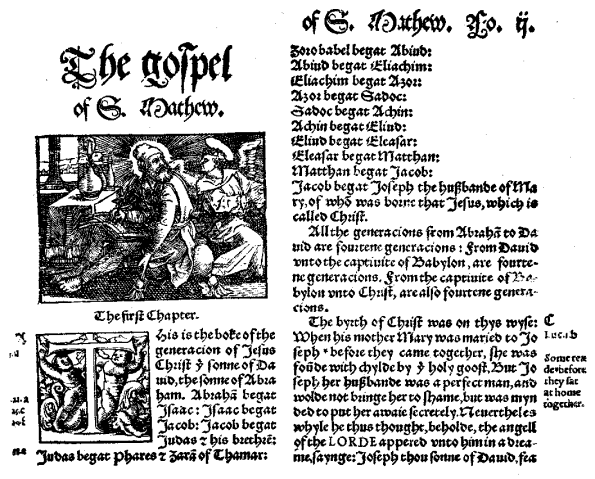He was responsible for the first mass-produced bible which changed everything. The era of mass communication had arrived. The Latin bible that bears his name was published in Mainz, Germany and had 643 leaves with each page printed in 2 columns of 42 lines. There were 150 copies of the original bible and each extant version is priceless. The process he used to print was probably invented in Korea. Letters were cast in type metal, composed into sentences on a type stick and set up as pages of type before being inked by the press. Some speculate that Gutenberg designed his press along the lines of wine and linen presses.
By combining these elements into a production system, he allowed for the rapid printing of written materials. An information explosion was about to occur in Renaissance Europe.
 In 1524 (some fifty years after the death of Gutenberg), William Tyndal fled England after a dispute with ecclesiastical authorities.
In 1524 (some fifty years after the death of Gutenberg), William Tyndal fled England after a dispute with ecclesiastical authorities. He moved to Germany and there he issued an English language version of the New Testament and the Pentateuch (the first five books of the Old Testament.) He translated the bible from the original Hebrew and Greek into English and his words were to become the base for the definitive King James version. He was never forgiven in England for his ‘blasphemy’. He was captured and strangled to death at Antwerp in 1536. He was officially asphyxiated out of history but his bible and his ideas survived him.
No comments:
Post a Comment